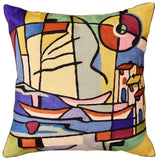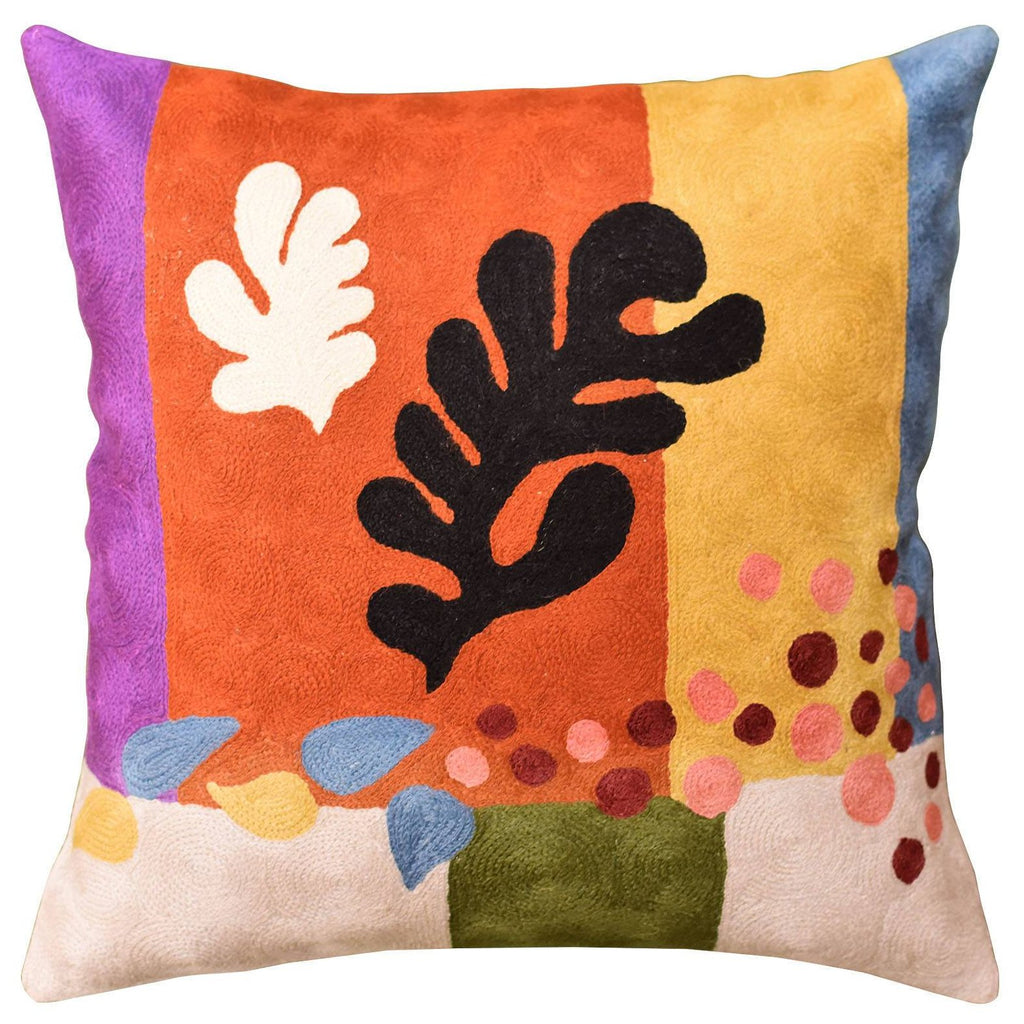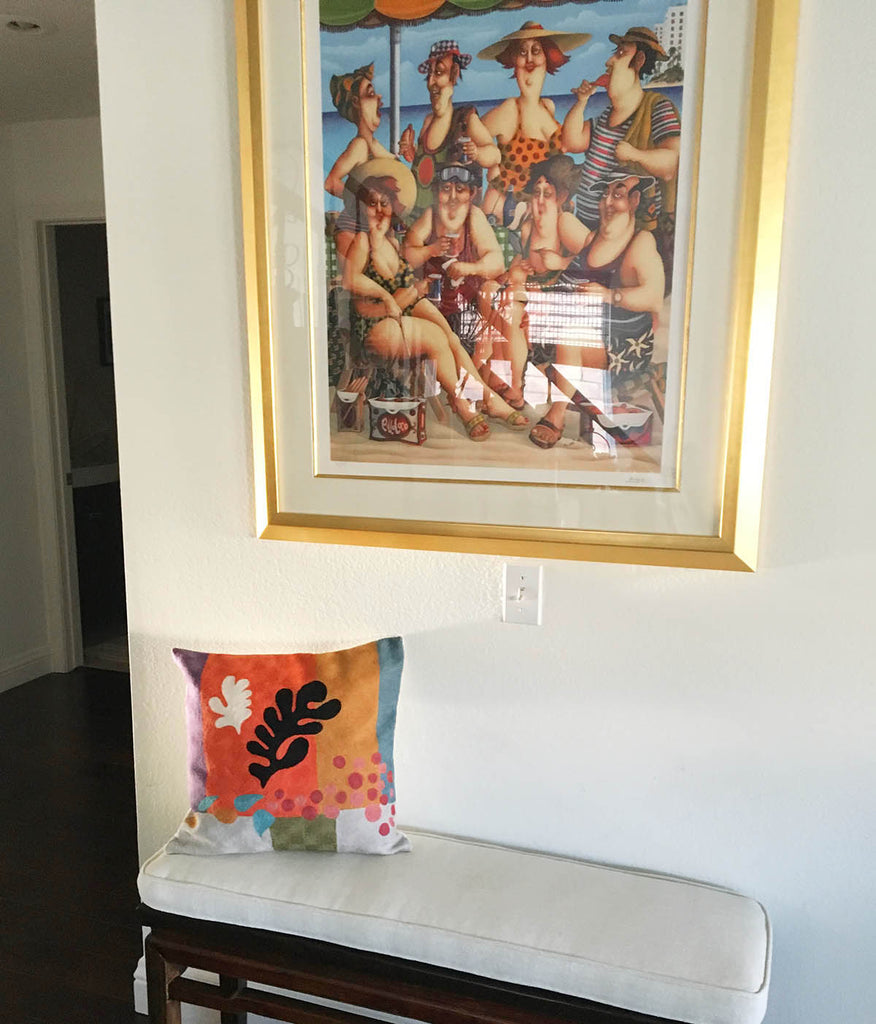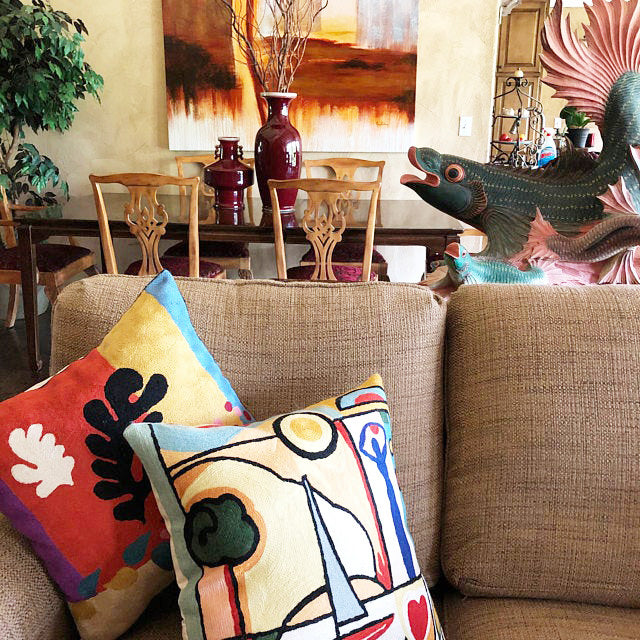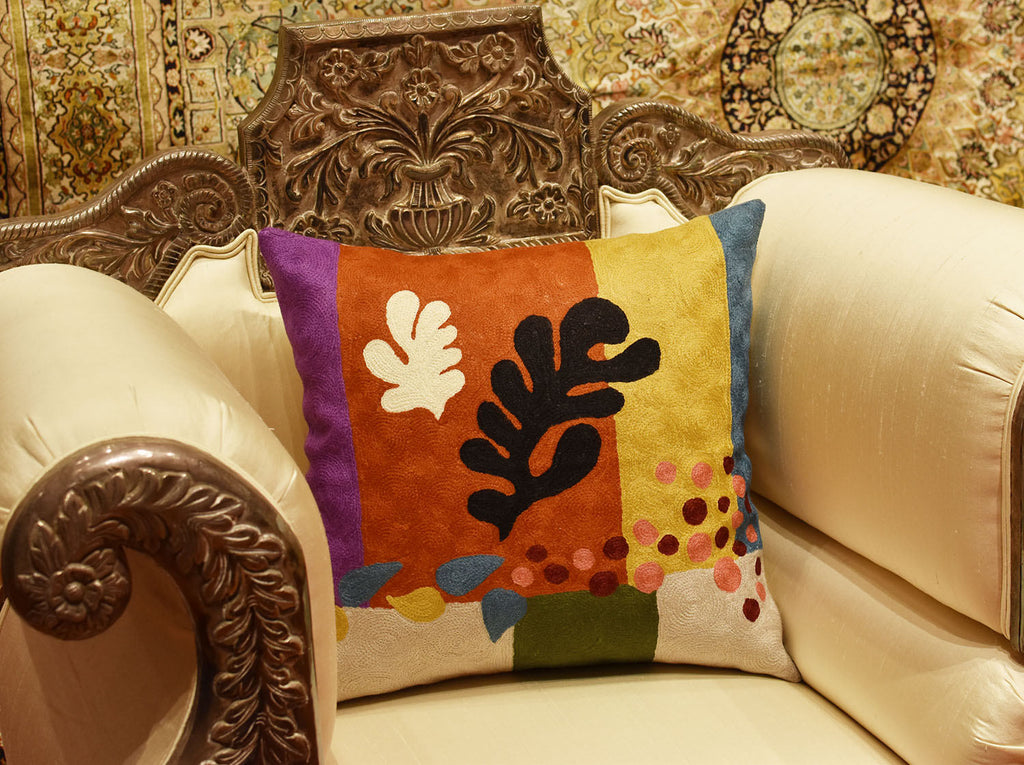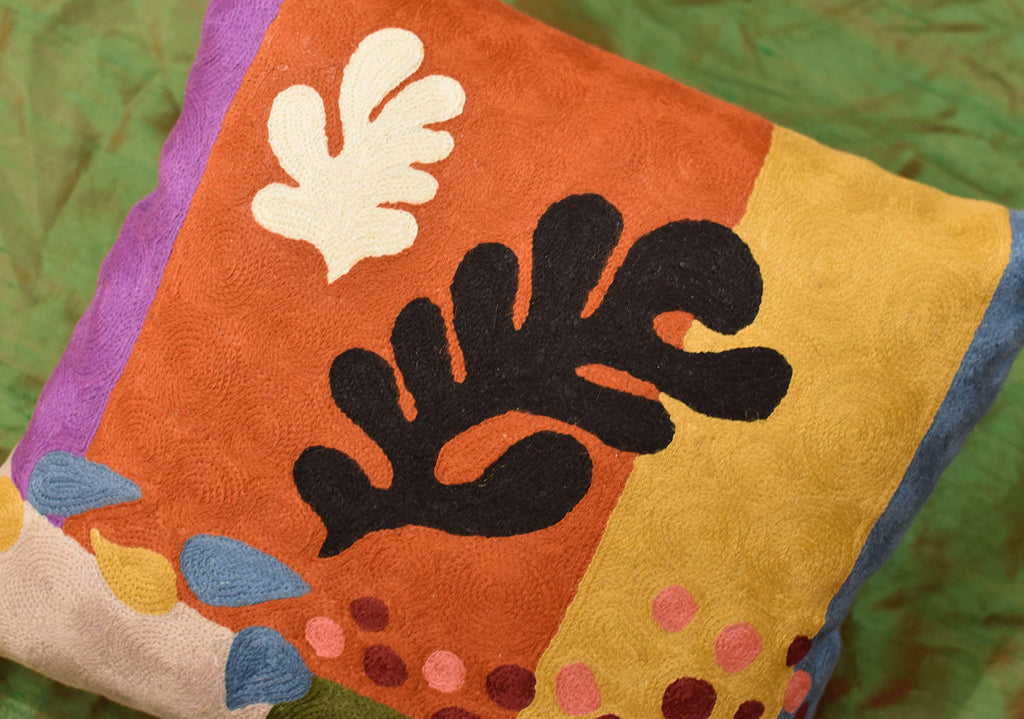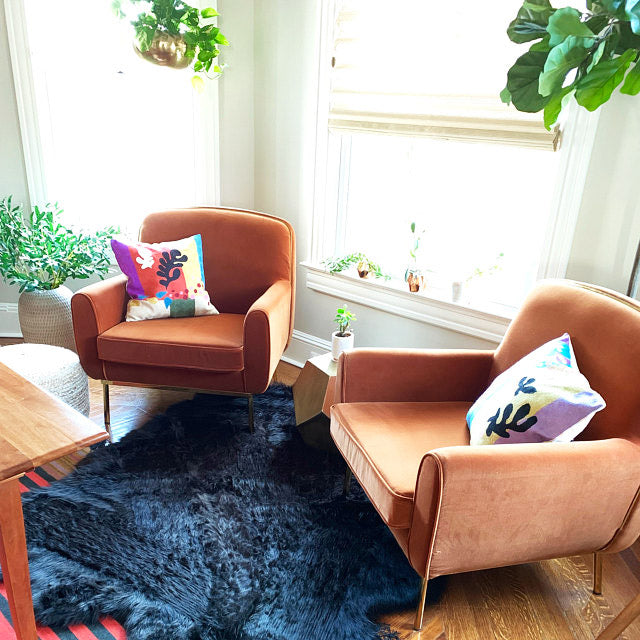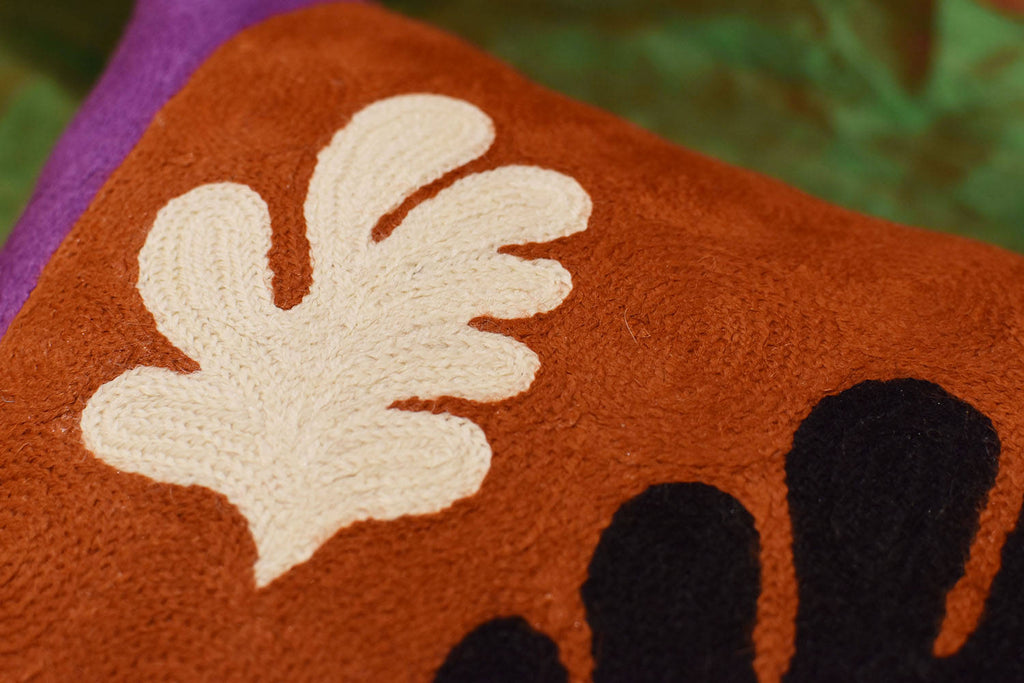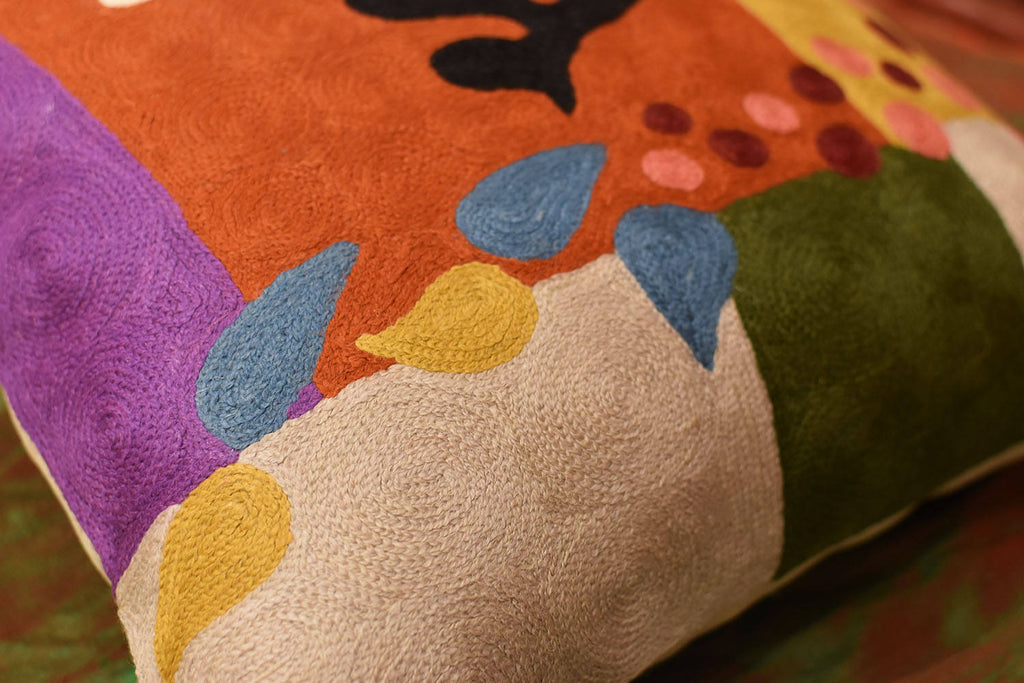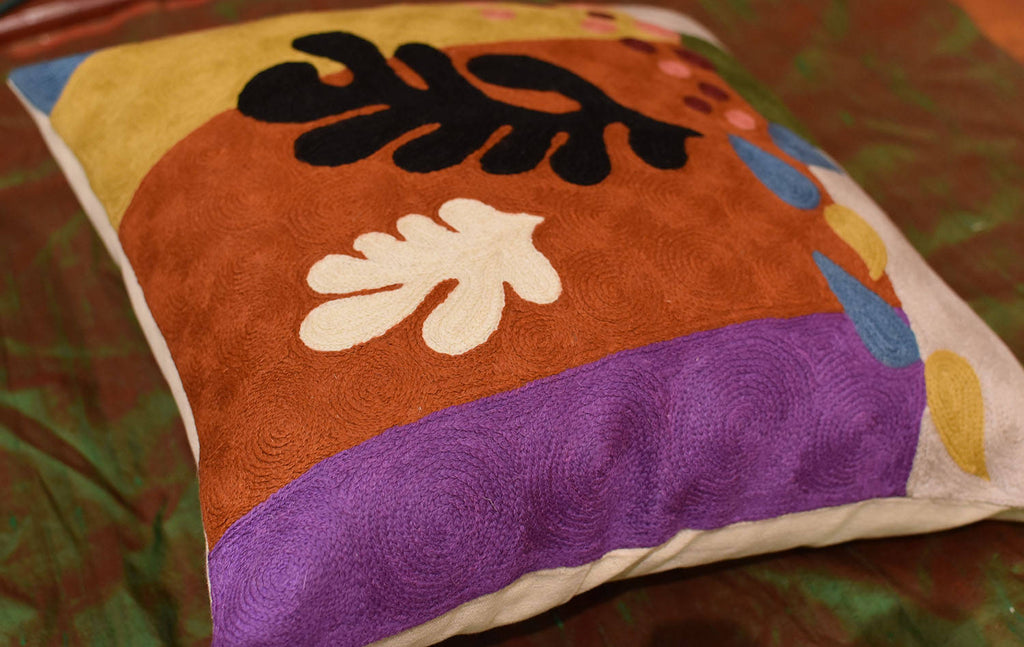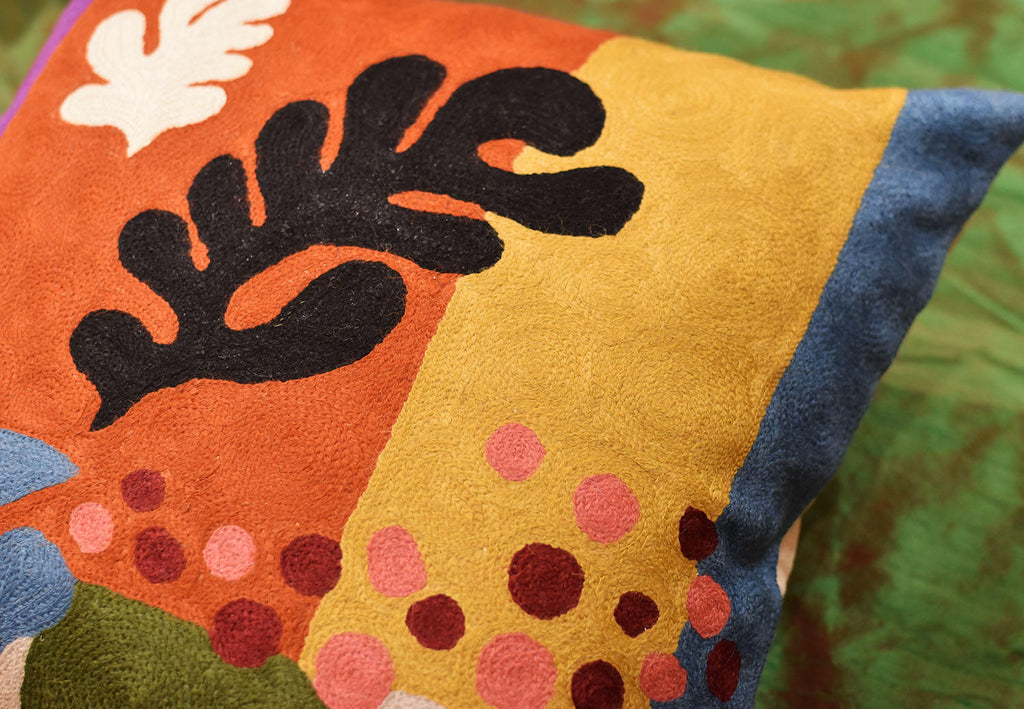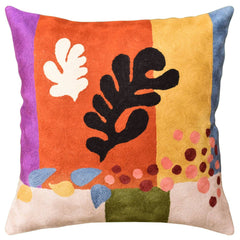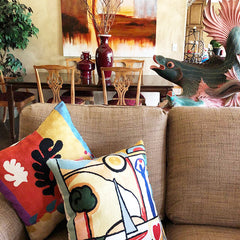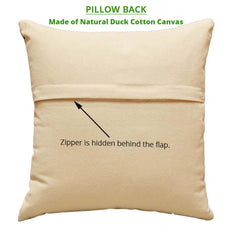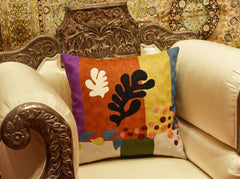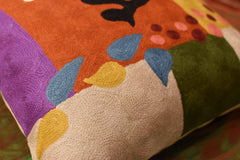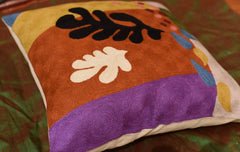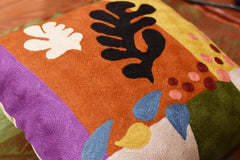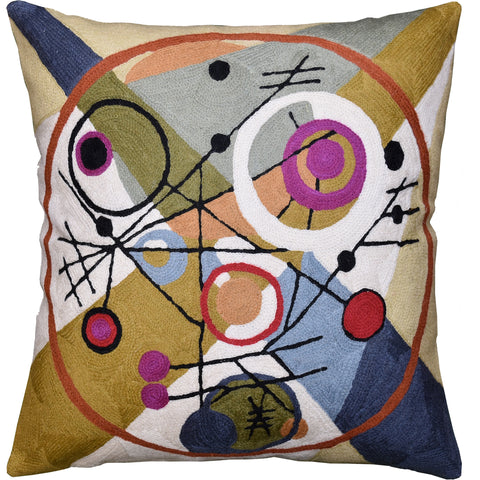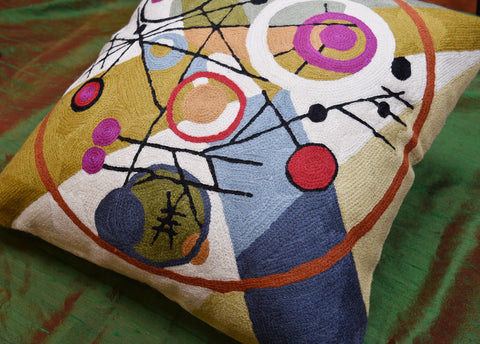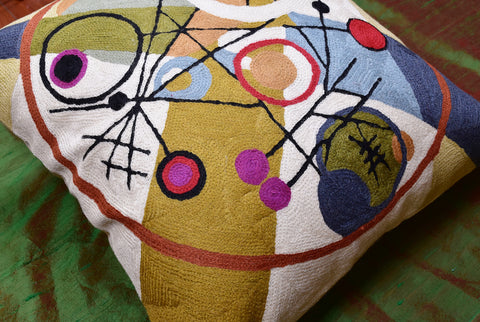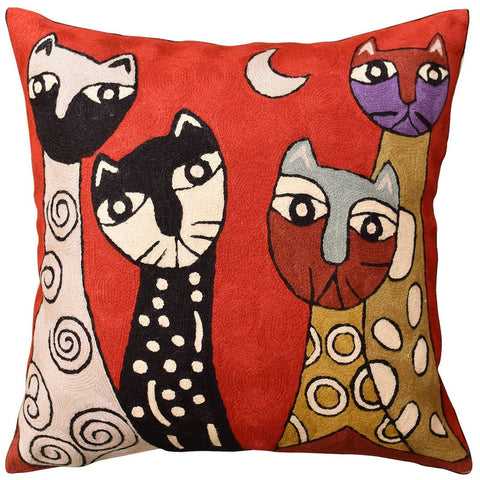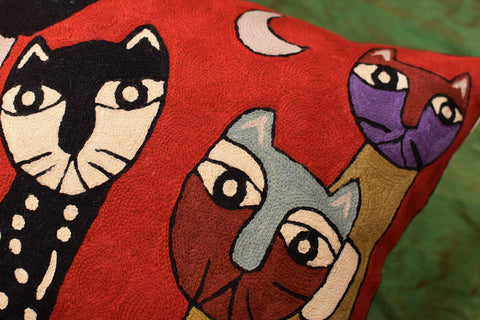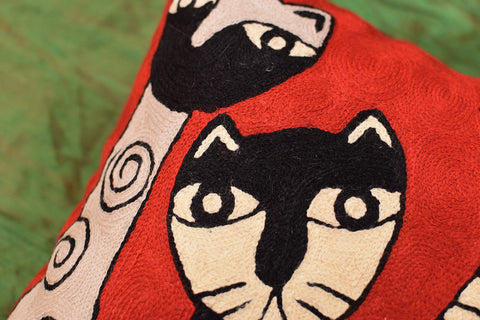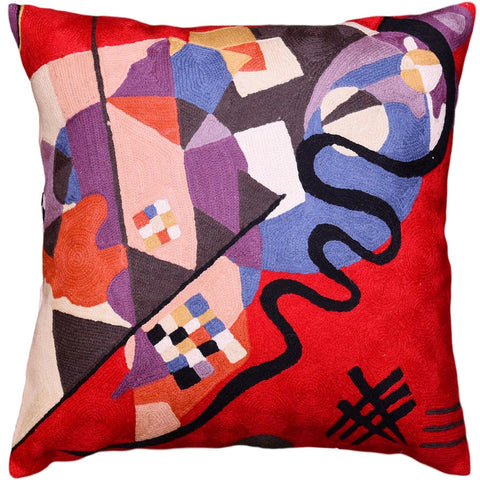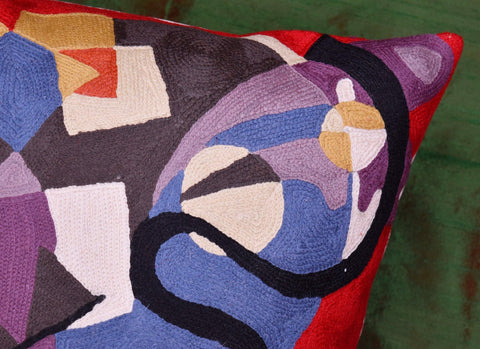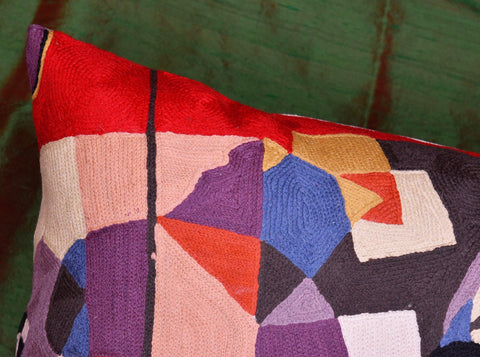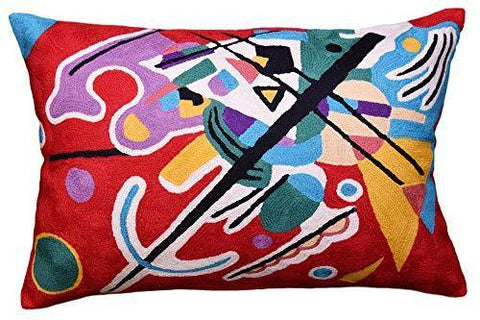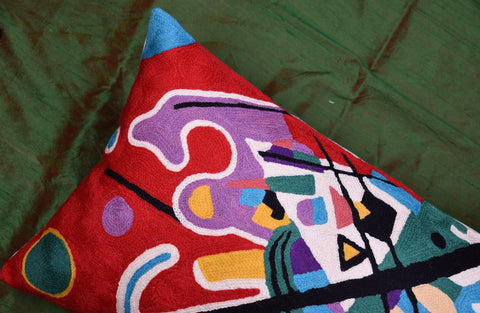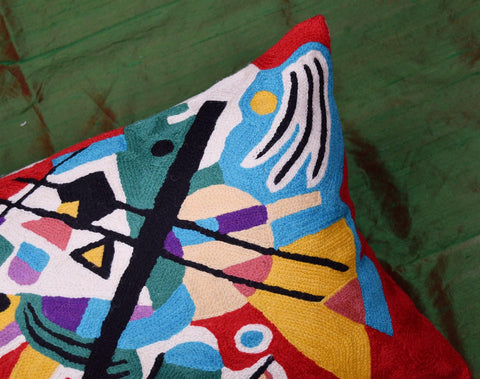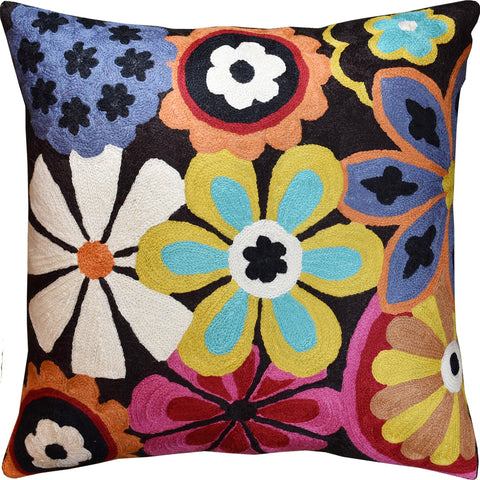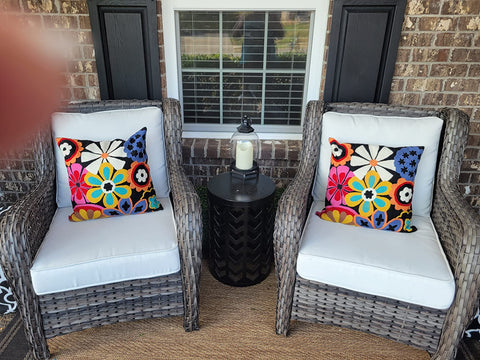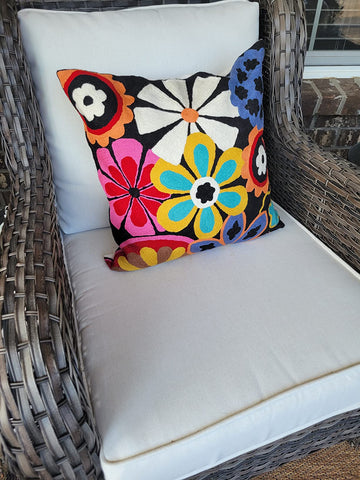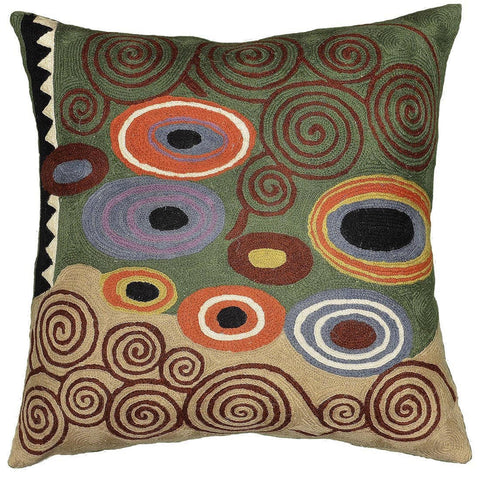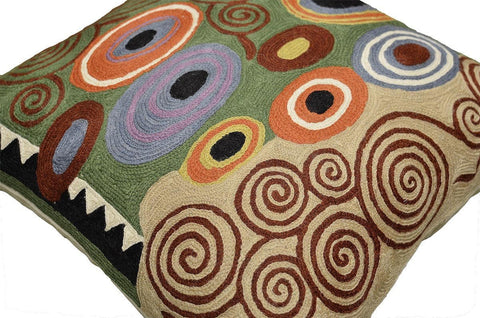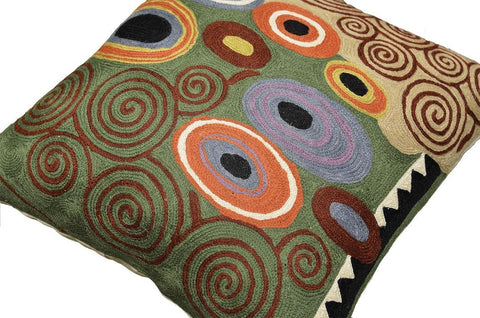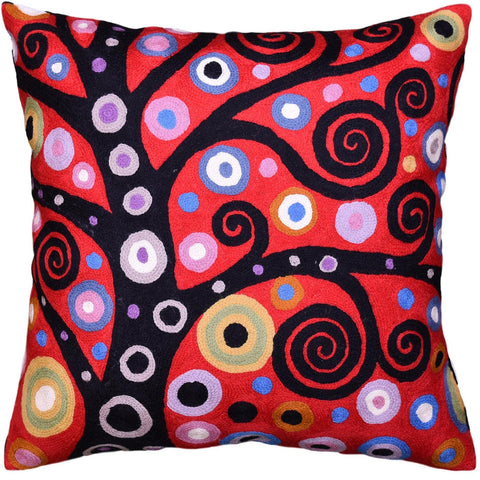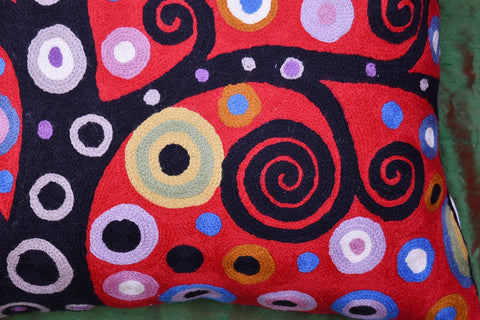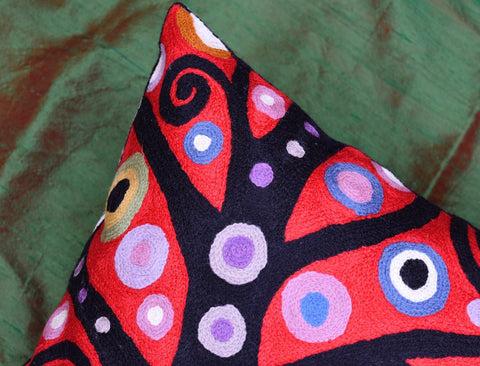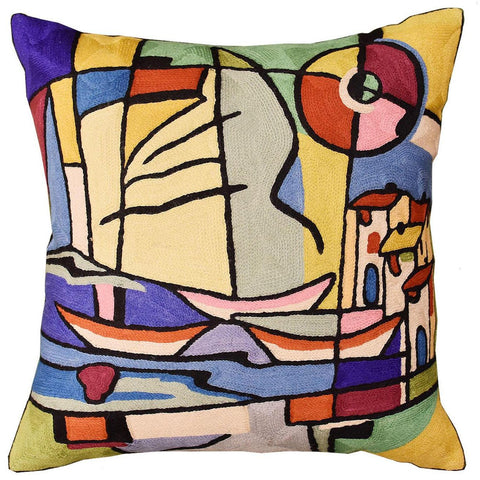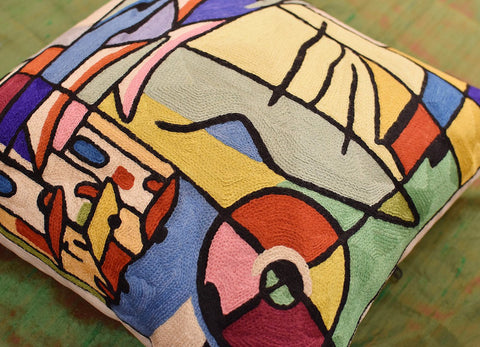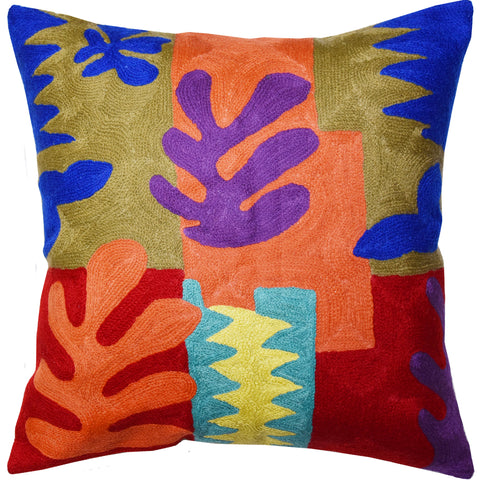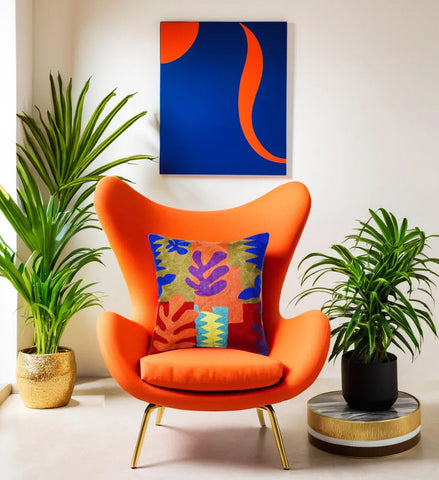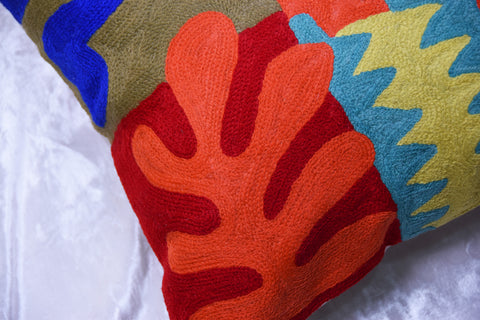Matisse Coral Pillow Cover Flower Cut-Outs III Modern Chair Cushion Farmhouse Pillowcase Mid Century Chair Hand Embroidered Wool Size 18x18
This modern accent pillow cover is inspired from Henri Matisse paper cut-outs collection. The hand embroidery is done in soft wool in chainstitch and beautiful yellow gold color is chosen as a background color which is juxtaposed in paper cut-outs. Using various elements inspired from Matisse, the entire base of the pillow is overlaid with soft wool, stitch by stitch,creating an extraordinary show piece for your decor. This is world-class workmanship created to enhance your world with dynamic color and motif.
- Composition: 70% Soft Wool, 30% Cotton
- Size: 18' x 18' (45 cms x 45 cms)
- Pillow Insert not Included (Only Cover is on Sale)
- Hand embroidered in Village Cottage Units
- Backing: Canvas (See the Last Picture)
These modern pillow covers are handcrafted by Kashmiri artisans, and are of the finest chain-stitch embroidery in the world.Created of soft Kashmir wool over cotton, this all-natural cover makes an enduring impression.
A close-up view of this abstract pillow cover allows you to see the amazing chain-stitch embroidery work of master artisans who have practiced this art their entire lives.This abstract decorative pillow cover could grace the cabin of your boat or the chair in your solarium and yet be equally as comfortable in your den.
The eye-popping color and pattern of this modern throw pillow is just what the designer ordered to create a fiery focal point in your decor. Perfect wherever you need a splash of color, this art work pillow creation is as durable as it is beautiful. Easy to care for, this cushion cover could spark up an old throw pillow or grace a new pillow form.
In the late 1940s, Henri Matisse turned almost exclusively to cut paper as his primary medium, and scissors as his chief implement, introducing a radically new operation that came to be called a cut-out. Matisse would cut painted sheets into forms of varying shapes and sizes‚ from the vegetal to the abstract‚ which he then arranged into lively compositions, striking for their play with color and contrast, their exploitation of decorative strategies, and their economy of means. Initially, these compositions were of modest size but, over time, their scale grew along with Matisse‚ s ambitions for them, expanding into mural or room-size works. A brilliant final chapter in Matisse‚ s long career, the cut-outs reflect both a renewed commitment to form and color and an inventiveness directed to the status of the work of art, whether as a unique object, environment, ornament, or a hybrid of all of these.


